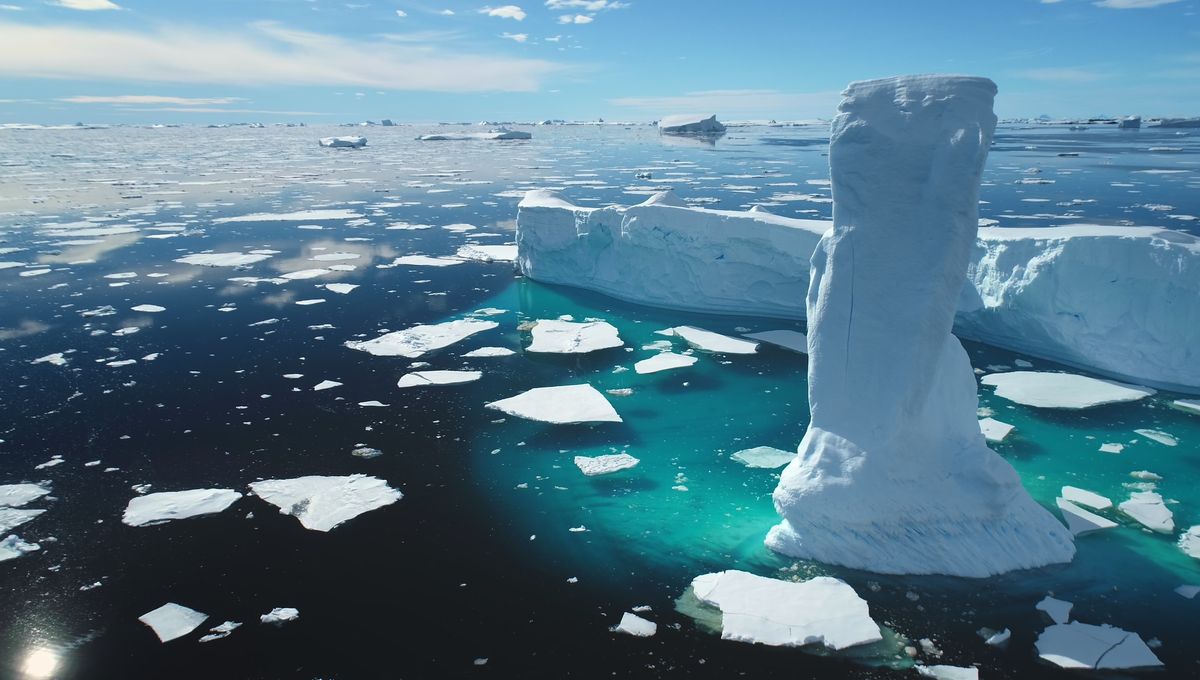
With the world’s polar regions melting at a dizzying rate, scientists have toyed with the idea of constructing giant underwater “curtains” around ice sheets to protect the wider world from rising sea levels. Beyond the perils of radical geoengineering projects, experts in international relations warn that the plan could spark political turmoil like we’ve never seen before.
The hypothetical plan, as outlined in a January 2024 news article in Nature, could entail building a 100-meter (328-foot) tall floating “curtain” that’s tied to the seafloor, stretching for 80 kilometers (49.8 miles) long around the imperiled ice sheets, such the West Antarctic Ice Sheet.
The researchers admitted they “absolutely don’t know if [the idea] is going to work or not,” but noted that it should be explored as an option to prevent catastrophic sea level rise in the decades ahead.
Adding to the debate, a new study argues that the geoengineering megaproject has the potential to turn the southernmost continent into the “object of international discord.”
Antarctica is a massive anomaly in international relations. Dozens of countries have signed up to the Antarctic Treaty System of 1959, which prohibits military activity, nuclear testing, and mining in the region.
Seven countries – Argentina, Australia, Chile, France, New Zealand, Norway, and the United Kingdom – have made territorial claims in Antarctica, but these claims are effectively “frozen” by the treaty. Despite some territorial overlaps – namely between the UK, Chile, and Argentina – the arrangement has successfully managed to avoid conflict over the continent (so far, at least).
The new paper argues that the Ice Sheet Curtain project has the potential to upset this longstanding peace by provoking new disputes over sovereignty, authority, and security.
While the Antarctic Treaty System suspends territorial claims, it does not resolve them, leaving room for tension when activities like geoengineering might be perceived as favoring or undermining certain nations’ interests or claims.
“This paper sheds light on the political and legal ‘shadows’ hidden behind the exciting surface of science and technology. However, we believe that it is necessary for the members of society to make decisions on the development of these technologies based on a thorough understanding of such negative aspects,” Shibata Akiho, study author and international law researcher at Kobe University in Japan, said in a statement.
In one of the most shocking scenarios explored by the paper, the researchers ponder whether the Antarctic structure could be “sabotaged or targeted for the purposes of political or terrorist blackmail” as a means to damage low-lying countries.
“As far-fetched as these scenarios might be, the mere possibility of these security risks has securitizing implications for the proposed public goods. Accordingly, the infrastructures will need to be monitored and protected, which would have major consequences for policing and the use of force in the Antarctic […] bearing in mind that this is a continent that is currently demilitarized and the only one on the planet to have never seen war,” the paper reads.
The paper looks back at previous disagreements to see how the hypothetical situation ahead could be managed. For instance, the researchers point out that a fierce debate around mineral extraction in Antarctica erupted in the 1980s, but it was successfully resolved by the “Protocol on Environmental Protection to the Antarctic Treaty” in 1991, which proactively prohibited mining in the Antarctic indefinitely.
Then again, perhaps we are getting ahead of ourselves. The failure to address climate change – the root cause of thawing ice sheets and rising sea levels – can be largely attributed to the inability of the international community and policymakers to enact meaningful global change.
As the world enters a new era of heightened tensions, it seems even less likely that we would be able to coordinate a massive engineering megaproject on such a scale, let alone secure a geopolitical agreement needed to avoid conflict.
“In the current climate, with growing international rivalry and great power strategic competition, it would be an extremely unlikely diplomatic achievement to secure the level of international cooperation […] required for the proposed glacial geoengineering infrastructures,” the study authors write in the paper.
The study is published in the journal International Affairs.
Source Link: Geoengineering Plan To Build Giant "Curtain" Around Antarctica Could Spark Huge Trouble